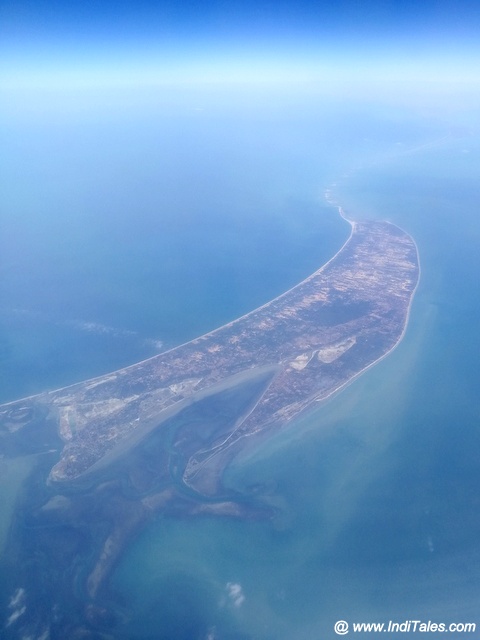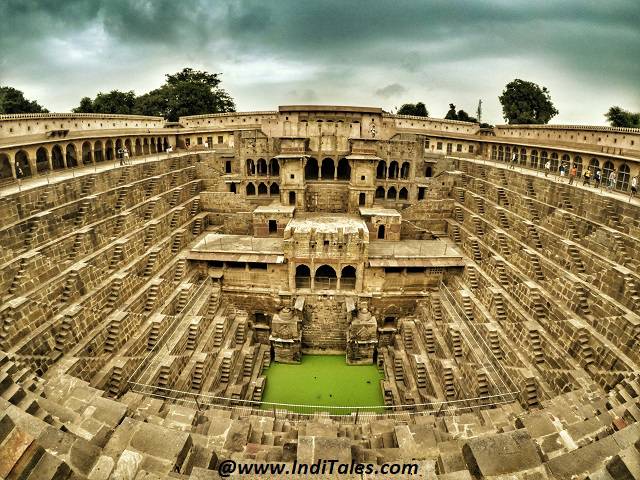Top Engineering Marvels of Indian Architecture You Must See
Engineering Marvels is not something that we associate with traveling in India. We know India for its spiritual, cultural and natural heritage. We also know there was a distinct ancient Indian Architecture. Contemporary Indian Architecture is evolving with time.
However, when I look back at my travels, there are some monuments that stand out as engineering marvels of ancient Indian architecture as well as contemporary Indian architecture. Most of the times they come wrapped in layers of art and history that we forget their engineering genius. Or, is it that our creative engineers and architects wanted their genius to stay invisible. Is that not the best kind of creation where you only see the beauty and the complex technology & hard work stays hidden?
When I thought about the engineering marvels in Indian Architecture, I went to FB and Twitter to seek more ideas. Most people responded based on beauty than the engineering aspect. I knew that they are missing what I have been missing all along. So here is my list of monuments that I think have an element of engineering innovation.
Kailash Cave – Ellora

There is no bigger engineering marvel in the world than the monolithic rock-cut Kailash Temple at Ellora. The rock scooped out top down to create a chariot shaped temple. The pillars of corridors running around the temple have just the perfect load bearing weight. You wonder how well did the architects and engineers know the rock they were working with. The hard granite must not have been easy to play with. I wonder if they made any mistakes and if they had a way to conceal them.
I want to meet the person whose vision was to carve out a temple from this rock. It is a perfect example of the temple is always there in every stone, you just need to remove the unnecessary to see it.
On that note, Badami caves were also carved in a similar fashion.
Sea Fort at Sindhudurg

Sindhudurg literally means the fort in the sea. I visited this sea-fort a couple of times, taking a shaky boat ride to its gate. When you realize that this fort has been standing in the saline sea water for more than 400 years, that is when you know it is an engineering marvel.
Seawater corrodes everything in coastal areas then how are the foundations of Sindhudurg standing strong even today. The answer lies in the thousands of tonnes of lead that was poured into its foundations. The ramparts have 75,000 kgs of iron in them. When I tried to think of its construction times, I wonder how the molten lead would have been transported in the middle of the sea.
Read More – Sindhudurg, Guarding the Konkan Coast
Its hidden entrance makes it an architectural wonder too. The enemy trying to attack would be lost circling around it trying to figure out its main gate. Not to mention the sweet water wells inside the fort.
Lotus Temple – New Delhi

Every time I land in Delhi, I try to look out for the Lotus temple, especially after its dark. There is no better sight than to see a lit up Lotus temple from the sky. Arguably, one of the best examples of contemporary Indian Architecture.
27 free standing petals in marble representing the three layers of a lotus that is just opening up – resembling the morning lotus. It is a sheer delight to see it from any angle. The petals encompass within them a giant 40-meter tall hall that can have up to 2500 people at one time.
Lotus temple is one of the few modern wonders of Indian Architecture, made in our lifetime. It is also one of the few monuments completely powered by Solar power.
Polish of Barabar Caves

Barabar Caves near Gaya in Bihar are the earliest known excavated caves in India. Their sculpting is also inspired by the earlier wooden structures. These are simpler caves compared to the later caves like Ajanta, Ellora or Kanheri. However, what is simply astonishing about these caves is their internal polish. When you touch its surface, it feels as if it has been polished just yesterday and probably using some sophisticated tools.
Read More – Barabar Caves, the oldest excavated caves in India
We know the polish has stayed so for the last 2300 years at least. Is it not one of the engineering marvels we have?
Barabar Caves are also the oldest known excavated caves in India, so they must have been the inspiration behind all the excavated caves around the country.
Hanging Pillar – Lepakshi Temple

We know pillars are there to support the ceiling. How do you create a stone pillar that is hanging from the ceiling? More importantly, why do you create it if not to show off your highly evolved knowledge of engineering and architecture?
We saw a similar pillar at Thousand Pillar Temple at Moodbidri in Karnataka. So, this was not an isolated case of architectural wonder but this was something that showcased the architect’s skill level.
Iron Pillar – Qutub Minar

Delhi is home to one of the oldest and one of the metallurgical engineering marvels of India. The fact that this iron pillar has stood in the open for more centuries if not millennia and not yet rusted, is a testimony of our knowledge of metallurgy.
As far as I know, this mystery is yet to be solved. The iron pillar was originally located at the Udaygiri Caves in Vidhisha (MP) from where it was brought to Delhi.
12 Zodiac Pillars of Vidyashankara Temple – Sringeri
This unique temple stands on 12 pillars aligned with the movement of the sun through different zodiac signs throughout the year. The engineering marvel is that whichever zodiac the sun is in, the first rays of sun fall on that pillar. The zodiac signs are duly carved on each of the pillars.

Built way back in 14th CE, this temple is a testimony to the fact that our ancestors only knew the skies well, they also knew how to blend it well with faith, architecture, stories and make it a part of our everyday life.
Another example of similar Indian Architecture can be seen at Sun Temple Modhera where the first rays of the sun used to fall on the deity on the days of Equinox.
Whispering Gallery of Gol Gumbaj at Vijayapura

Gol Gumbaz is known for two engineering marvels in India. First is its free-standing dome, which is one of the largest such domes around the world. It is definitely the biggest such dome in India. However, for me, its bigger marvel is its whispering gallery that skirts the dome from inside. It is a wonder in acoustics. Whatever you speak here can be heard across the dome clearly. Louder sounds reverberate many times across the diameter of the dome. The sounds can also be heard outside the dome.
I wonder if this was just a mausoleum or it had other purposes as well for such brilliant acoustics to be built.
Statue of Unity – Kavadia Gujarat

This is the latest engineering marvel added to the landscape of India. Dedicated to the Iron man of India – Sardar Vallabhbhai Patel, it is the tallest free-standing statue in the world at 182 meters on banks of Narmada River. It is one of the projects that our generation of Indians have seen being commissioned and completed in record time. I hope it will give the required boost to Indian Tourism.
Another statue that stands at the southern tip of India is the poet Thiruvallur Statue at Kanyakumari.
Ram Setu

Ram Setu that briefly was also called Adam’s Bridge connects the easternmost tip of Tamil Nadu near Rameshwaram at Dhanush Kodi to Northern Sri Lanka. Ram Setu is mentioned in epic Ramayana, where it played a major role in the story. The construction of the bridge is mentioned in detail.
The bridge can be seen when you fly from India to Sri Lanka. On a clear day, it is a delight to see the faint line connecting the two land masses.
Musical pillars – Vitthal Temple, Hampi & Stone Chariot

Hampi is the most beautiful ruined city in India. It is a photographer’s delight. No matter how many times I visit it Hampi, I am amazed at the stone chariot that stands here – so real that you feel it would move anytime or may get pushed if you lean on it too much.
Am fortunate that when I visited Hampi for the first time in 2004, I could hear the musical pillars of Vithala temple play. Now they have been acid washed and barricaded, you can admire them only from a distance. Imagine the knowledge of rocks & rock cutting, blended perfectly with knowledge of architecture and music. Is it not an engineering marvel?
Airteshwara temple in Darasuram, Tamil Nadu also has musical steps in stone.
Vijay Stambh – Chittorgarh

Imagine a victory tower from 16th CE in stone standing tall in one of the biggest forts in India, in a land that is known for courage. It is not just a tower or a plain Minar, it is a tower that tells many stories. It is carved outside as well as inside. You can climb up the narrow stairs inside it and reach the top to get a bird’s eye view of the fish-shaped fort.
Nine stories of the tower depict 9 avatars of Vishnu and in the middle is Sun – the sign of the dynasty that ruled from here.
Trivia – Vijay Stambh of Chittorgarh was the contender for the national symbols of India.
Such a narrow tall building should have fallen apart just by the force of the wind around it. Thankfully the architects thought about it made provisions to channelize the wind in such a way that the Vijay Stambh will stand firm and strong.
Stepwells of India

Word, stepwell makes us think of these structures as the mere water storage facility. However, they are again the brilliant water management systems that would store every drop of rainwater for use throughout the year. The Stepwells with geometric steps found in step wells of Rajasthan, Gujarat, and Karnataka are masterpieces of Indian Architecture.
The step wells were also social spaces where people would sit during the hot summer months. Imagine sitting with all the sculpted walls all around you at Rani Ki Vav that went seven levels below the ground. Or, spending the afternoons next to Chand Baori in Abhaneri or at Hampi.
Pillars of Ranakpur Jain Temple

Comments